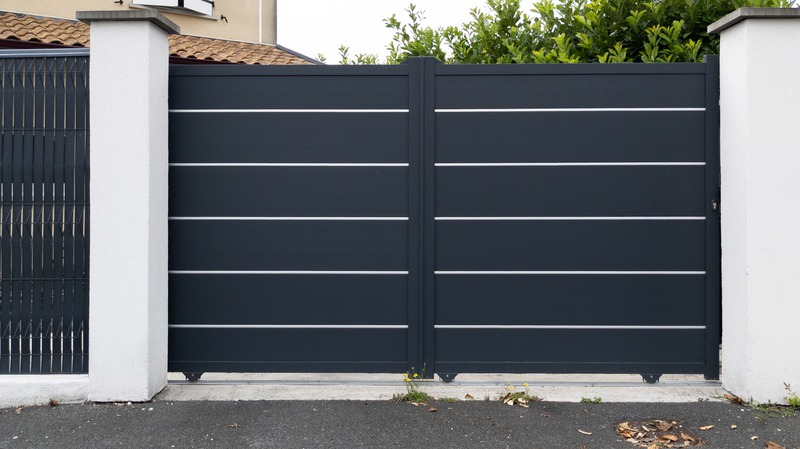How to Choose High-Quality Fence Materials for Durability and Style
Picking the right fence material is more than just a decision—it’s an investment in your property. It’s not just about enclosing a space but enhancing it. Whether you’re aiming to boost security and privacy or add a pinch of style to your property, choosing the right material is essential. But with a plethora of options available, how do you decide what’s best?
Consider Your Needs and Preferences
Your first step in selecting a fence material is understanding why you need the fence. Are you looking for privacy from nosy neighbors, or is security your top priority? Maybe it’s a combination of both. Write down your primary needs and keep them as a checklist against which you can evaluate your options.
-
Privacy: If privacy is your main concern, solid panels in wood or vinyl might be your go-to option.
-
Security: For high security, steel or aluminum might be the better choice due to their strength.
-
Decor: Wooden fences often add a classic style, while wrought iron provides a more upscale look.
Explore Different Material Options
The next phase in your fence journey is exploring the different materials available to you and matching them to your checklist. Here’s what you might consider:
Wooden Fences
Wood is a traditional favorite for fencing, offering a natural look. It’s relatively cost-effective and can be customized in terms of height, color, and style. However, it requires regular maintenance to remain in tip-top shape. A good application of a sealant or protective paint can help prolong its lifespan.
Pros:
-
Natural aesthetic and versatile styles
-
Can be painted or stained
-
Environmentally friendly
Cons:
-
Requires regular upkeep
-
Susceptible to weather damage and pests
Vinyl Fences
Vinyl offers similar privacy benefits as wood but without the extensive maintenance. It’s durable, resists weathering, and comes in a variety of styles and colors.
Pros:
-
Low maintenance
-
Weather-resistant
-
Available in many colors and styles
Cons:
-
Higher initial cost
-
May become brittle in extremely cold weather
Metal Fences
Aluminum Fences
Lightweight but durable, aluminum is perfect for those seeking a decorative option with minimal upkeep. It’s rust-resistant, making it suitable for areas with high humidity or near the coastline.
Pros:
-
Low maintenance and rust-resistant
-
Variety of styles and colors
-
Lightweight yet sturdy
Cons:
-
Not ideal for high-security needs
-
Less privacy compared to solid fencing
Steel and Wrought Iron Fences
When uncompromising security is sought, steel and wrought iron are strong choices. These materials are durable, add an elegant touch to your property, and can be customized.
Pros:
-
Extremely durable and secure
-
Customizable styles
-
Does not warp or rot
Cons:
-
Regular maintenance to prevent rust
-
Higher cost
Evaluating Longevity and Maintenance
Think about how much time and effort you’re willing to put into maintaining your fence. Material lifespan and upkeep should heavily influence your decision. This also includes accounting for residential fence repairs, as they can impact the long-term satisfaction and functionality of your fencing. Calculate not only the initial investment but also the long-term care and renewal that might apply. Wood, while beautiful and versatile, requires the most maintenance. Regular painting or staining is necessary.
Vinyl breaks the cycle of routine care, needing only occasional cleaning. Metal options such as steel or aluminum will generally need the least attention in terms of cleaning and maintenance, though considerations about repainting or treating the material for rust are essential for wrought iron options. By factoring in these details, you can ensure that your choice meets not only aesthetic and cost criteria but also practicality for ongoing maintenance and any necessary residential fence repairs.
Factoring in Climate and Environment
Your local environment can influence your fence choice. Understanding weather patterns and local climate is crucial when selecting the right material.
-
Humid Climates: Opt for rust-resistant or weatherproof options like aluminum or vinyl.
-
Cold Climates: Steel or treated wood can withstand cold snaps, though vinyl might become brittle.
-
Warm Climates: Any material could work, but consider UV-resistant options to prevent damage.
Emphasizing Aesthetic Appeal
Your fence serves a practical role and is part of your home’s aesthetic. Align the style of the fence with the design of your house. Wood might complement a rustic home, while polished aluminum could be best suited to something ultra-modern. Tailor the fence design to reflect your personal style and enhance curb appeal.
Budget Considerations
Your budget will heavily influence your decision, considering not just the cost of the material but also installation and future maintenance. Deciding upfront the scale of your budget can avoid unforeseen surprises down the road.
-
Initial Costs: Wood tends to be cheaper upfront but expensive to maintain over time.
-
Long-Term Costs: Metals like aluminum have higher initial costs but lower long-term maintenance expenses.
Incorporate your budget considerations early on in your selection process. An accurately scoped budget will ensure your choice meets your needs and doesn’t hurt your pocket, either.
Consult with Experts
Once you have a general idea of what you want, reaching out to professionals for guidance can be invaluable. Collaboration with expert fence contractors allows you to leverage their experience and get insights you may not have considered. They can outline the pros and cons of different materials specific to your area and offer advice based on extensive local project knowledge.
Check Local Regulations
Before you choose a particular material or style, check your local regulations. Some neighborhoods or homeowner associations have rules or restrictions on fence types and heights. If necessary, acquire relevant permits to avoid potential fines or orders to remove the fence post-installation.
Make Your Decision
By now, you should be equipped with the information needed to make a well-rounded fencing decision. Balancing practicality with style, price with longevity, and individual needs with professional advice will guide you to the perfect match for your property. Whether a Broken Arrow fence company or another contractor carries out your installation, ensure your choice matches your vision.
Final Thoughts
When choosing materials for a fence, balance your personal style with practical considerations like durability, weather resistance, and maintenance needs. Wood offers a classic look but requires upkeep, while vinyl or metal may provide durability with less maintenance. Consider the local climate and environmental factors; for instance, metal might rust in humid areas. Also, align your choice with the property’s architectural style to enhance its overall appearance. By considering these factors, you’ll have a sturdy, beautiful fence that complements your home and stands the test of time.
Categories

Recent Posts
Theme by The WP Club . Proudly powered by WordPress

